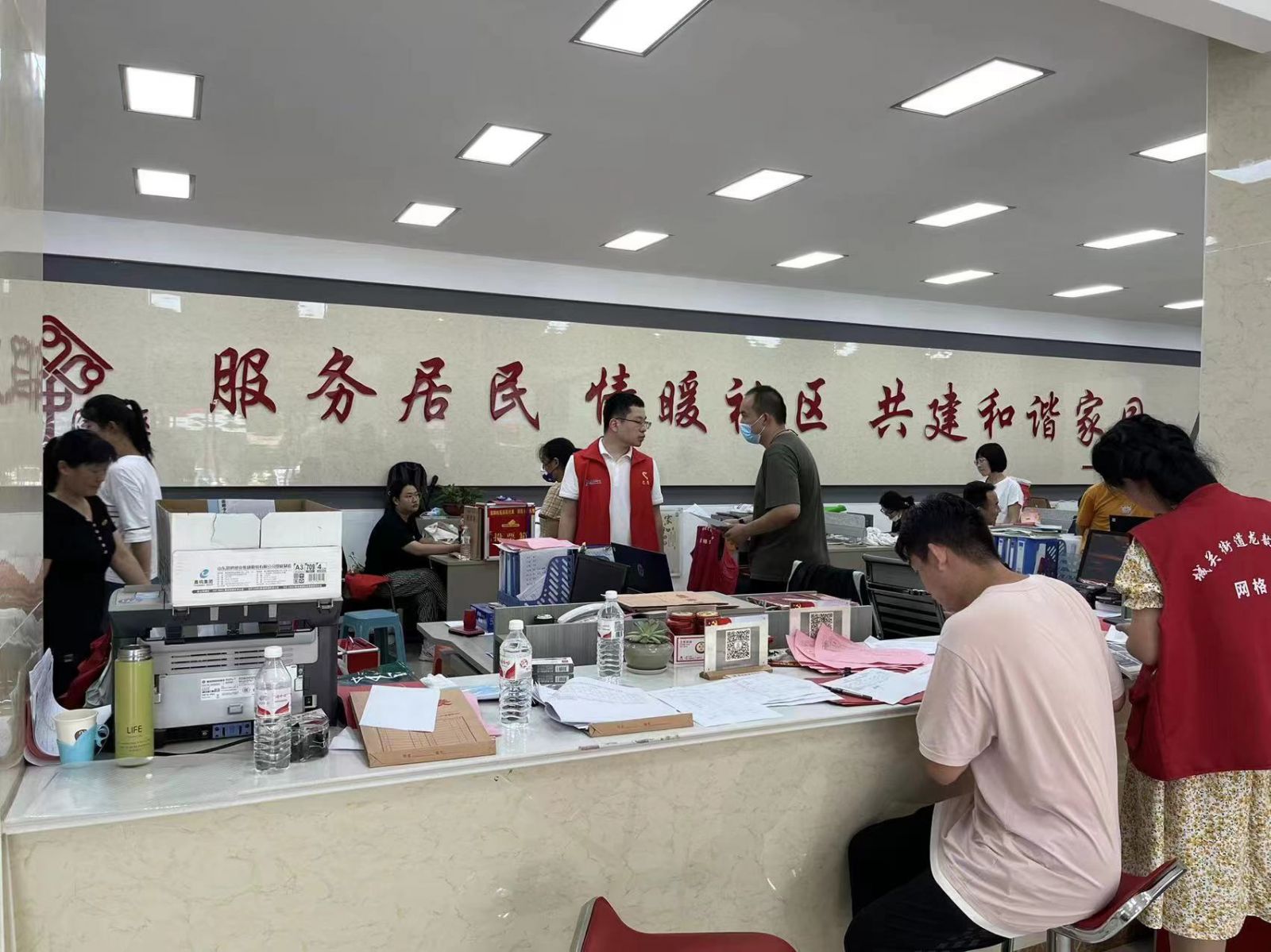Visit the "Wenxian" of Dunhuang
Author:China Social Sciences Network Time:2022.07.01
In the summer of the previous year, after work, I thought about it, so I rented a car from Dunhuang City to find Wenxian Bay on the east bank of the Party River. Because of the modern historical data, there was a group of Wenxian immigrants who came to Dunhuang.
During the Yuan and Ming dynasties, Dunhuang's population was relocated four times and the population drama was reduced. In the early years of the Yongzheng of the Qing Dynasty, the Qing government began to lead immigration to reclamation. In just two or three years since the four years of Yongzheng (1726), 2,400 households in the 56th states and counties of Gansu migrated to the east and west coast of the Dunhuang Party River, and a tide of Dunhuang immigration was formed at that time. The immigrants who arrived in Dunhuang lived together with the county status that was originally moved out of the place, gathered together, and used the name of the original county to call the neighborhood alley in the city. Each house has a long one, and one is one in each ten households.
From the "Yongzheng Immigration Immigration Fang Fang" from Dunhuang County, there are two places in Wenxianfang, which are located between the "Yongfeng canal" and the new and old "Fu Qian canquers" on the east bank of the Party River. The former is approaching Chongxinfang, Pingliangfang, Di Daofang, and the latter is connected to Jiezhoufang and Jingningfang. Wenxianfang, later referred to as Wenxian, is also called "Wenxian Bay".
When we walked and stopped, we asked everyone along the way, and basically no one could say where "Wenxian" or "Wenxian Bay" was. Walk to a place called Sujiabao and find an old man who is 71 -year -old to understand the clues. He said that Sujiabao was named Ronburg in his early years, and he might be named after the migration of Rongde under Liupan Mountain. When he was a child, he had been in elementary school in Wenxian (Wenxian Bay), and the local place was in Qiaoxi Village, No. 7 in Guojiabao Town today. When I learned this news, I immediately bloomed and rushed to my destination, and I felt kind about every river and road of all the way!
When I arrived at Qiao Village No. 7, I asked seven or eight villagers, and I still couldn't say the specific location of Wenxian County. In fact, the "Yongfeng canal" and "Fu Qian canal" named in the early years were now unable to find it, and Wenxian Bay could not see the traces of "bay" at all. The terrain was wide and flat. Some people say that there is a older man here named Yang Dongfang. He is 86 years old and depends on whether he knows. Among the farmers next to the city wall site, we finally found the Yang Dongfang couple. Coincidentally, he served as the secretary of the Wenxian Brigade decades ago. According to his memories, in the 1970s, it was also called Wenxian Bay, and now it is not called. Around 1949, there were Da Dao Temple, Jiezhou Temple, and Yangtze Temple, and almost every migrant village had a temple. Because the first -time Hedong people need to "label" the original region, so they have their own "some softes"; the distant people who leave their hometown need to build a place to worship the ancestors of the distant place. The unique "certain temple".
According to historical materials, after the immigration of the Yongzheng, there are many "temples" on both sides of the Party River, and it is a fashion. "Dunhuang County Records" said: Yongzheng immigrants "divided into six sideways and 56 squares, and each house built more temples, and the customs of beliefs maintained the characteristics of the original place of residence. Fortunately, it can be described as 'Sanli different winds, different customs'. " On July 30 each year, the Tibetan Association was held. In front of the position, Grandpa Tuo Cao sent to his ancestor, named "Bag".
Di Dao Temple is naturally built by the people of Di Dao (now Lintong County). Wenxian Tianchi is "Yang Tangchi", "Yang Tang" is the "Tianchi" in Tibetan, and "pool" is the interpretation of Chinese, which constitutes the nouns of the combination of Tibetan and Han. Chi Bian has "Yang Tang Temple" since ancient times. The river flowing from Tianchi is called "Yangtang River" and injected into Bailong River into the estuary. According to the name of "Yangtang Temple", the original Wenxian immigrants can be judged from the villages of the Yangtang River Basin in the northern foot of the high -rise mountain.
The place name is the "fossil" of history. From the Dunhuang County Chronicle "A List of Shiwater Water Conservancy", we can see that there are a total of ninety -six squares, which correspond to the place name of the Yellow River. Taking "Xia Yongfeng Qu" as an example, the canal "should be poured in Twenty -five squares in the field: Xijifang, Jingyuanfang, Huiningfang, Lizhoufang, Anfangfang, Liangzhangfang, Lingtaifang, Longdefang, and Longdefang, Dong'an Dingfang, Dongling Taifang, Dongjingzhoufang, Donghui Ningfang, Dongzhen Fangfang, Xiajing Yuanfang, Xiawei Yuanfang, Huizhoufang, Zhenyuanfang, Huiningfang (maybe duplicate), Pingliang Fang, Di Dao Fang, Xinping Daofang, Xinping Liangfang, Zhongping Liangfang, Wenxian Fang, Chongxinfang ". Among these corresponding sources of place names, only "Lizhou, Zhenfan, Huizhou, Di Dao" later changed to "Xichuan, Minqin, Huixian, Lintong," in addition, most of the place names have continued to this day. It is a pity that the "certain temples" that had been in the original scene had disappeared now. Not only that, the original name of Dunhuang has now become uniform, and the place names of "Wenxianfang" and "Wenxian Bay" no longer exist, and the "certain squares" of the stars have been difficult to find.
Dunhuang's place names have been concentrated twice: the first time in 1969, the place name was changed almost 80%; the second occurred in the past 20 years. Due to the accelerated pace of urbanization, many villagers moved into the urban area and lived in peace and no longer returned to the village. In addition, the government regulated the place names, and a formal village name was issued to each village. Most of the new villages were separated from the earlier village names. For example, another small village belonging to Qiliqiao Village, the village card is called "Jingzhou". I suspect that it is caused by the mistakes of "Jizhou" or "Lizhou". "Jiezhou" and "Lizhou", regardless of historical books or place names, have clear records of immigrants. The "Jingzhou" is far away in Hubei, and the historical materials or Dunhuang old place cannot provide evidence of "Jingzhou" immigrants. What about ancient dialects? I casually enumerated the voice characteristics of several Wenxian dialects, and let the old couples of Yang Dongfang think about it, and even the words in the mouth of the late parents in his memory have been remembered, and there are still no traces of the corresponding. The words of the two elderly people sound similar to what they are in today's Lintong and Weiyuan. The vicissitudes of the sea, the personnel suddenly, we have to let us funeral.
The Wenxian immigrants in Dunhuang are the southernmost tip of Gansu Province and the farthest immigrant from the destination. This trip made me feel deeply: At the beginning, how hard they had experienced, they arrived at Dunhuang and built a new home. Today, 300 years later, the village temple was gone, the place name changed, and the dialect was fused. But I think that Dunhuang's "Wenxian" will also grow in people's memory. I will not be the last hometown who visit Dunhuang to visit "Wenxian". In the new era, "Wenxian" will not just echo the history of history in the literature.
Source: China Social Science Network-Journal of Social Sciences of China
Author: Mo Chao
- END -
[New Era of Entrusted New Journal] New Era] Lintong: Demonstration of the integration of production and cities

Liu Mingzhi Liu RuihuaThere is no industrial support in the city. Even if it is be...
I never expected that the follow -up of the Tangshan case was like this ...

Recently, you can enter the word Tangshan on the Internet, and you will see such r...